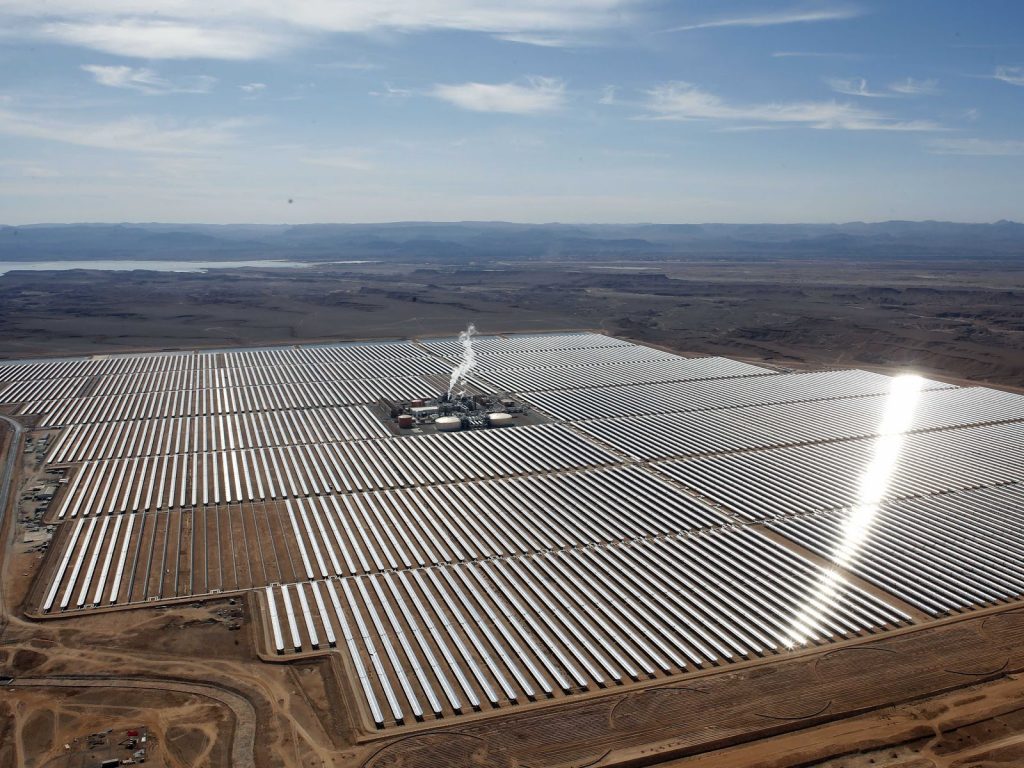Solar Energy and the Environment
“Morocco has activated the world’s largest solar power plant in the Sahara desert. According to Climate Investment Funds the plant will reduce carbon emissions by 760,000 tons per year. The Nour-Ouarzazate power complex uses concentrating solar power which enables energy to be stored and used
for nights and cloudy days. By 2020, or even sooner, the $9 billion solar power plant is expected to generate 580 megawatts (MW), enough electricity to power over a million homes.”
Symbolically, the name of the plant – Noor – is an Arabic word meaning “light” and its success could mark the dawn of a new industry for a country that until recently imported 97% of its energy needs.
What are the benefits of using the renewable solar energy?
1. Solar reduces air pollution
“Harmful carbon dioxide and methane emissions from fossil fuels, our traditional energy source, are leading contributors to global warming and decreased air quality. But generating electricity with solar panels produces no greenhouse gasses whatsoever. That’s a huge step towards mitigating the
human impact of climate change.”
2. Solar reduces water pollution
“While all manufacturing processes require some water, solar photovoltaic cells don’t need water to generate electricity. With solar energy there is no pollution of local water resources, nor does their operation (which again requires NO water) strain local supplies through the competition with agriculture,
drinking systems, and other vital water needs.”
3. Solar reduces the need for finite resources
“Solar energy is renewable. The sun is the world’s most abundant energy source, producing an amazing 173,000 terawatts of solar energy every second. That’s more than 10,000 times the world’s total combined energy use, and it can be used over and over again. In contrast, fossil fuels are non-renewable
and while they may seem in abundance today, there will come a time when the world will run out. Or, the cost of finding and extracting these sources will become too expensive. By that time, the resulting damage to our financial infrastructure and environment may be unrepairable. Switching to solar today
is the best way to hedge against the reality of finite fuel resources.”
However, some toxic materials and chemicals are used to make the photovoltaic (PV) cells that convert sunlight into electricity. Some solar thermal systems use potentially hazardous fluids to transfer heat. Leaks of these materials could be harmful to the environment.
“As with any type of power plant, large solar power plants can affect the environment near their locations. Clearing land for construction and the placement of the power plant may have long-term effects on the habitats of native plants and animals. Some solar power plants may require water for cleaning
solar collectors and concentrators or for cooling turbine generators. Using large volumes of ground water or surface water in some arid locations may affect the ecosystems that depend on these water resources. In addition, the beam of concentrated sunlight a solar power tower creates can kill birds and
insects that fly into the beam.”
Scientists are still reviewing all the pros and cons, but it seems clear that using the renewable solar eneragy is already a huge step.
Liked the article? Subscribe now to receive the hottest news and tricks every day.

